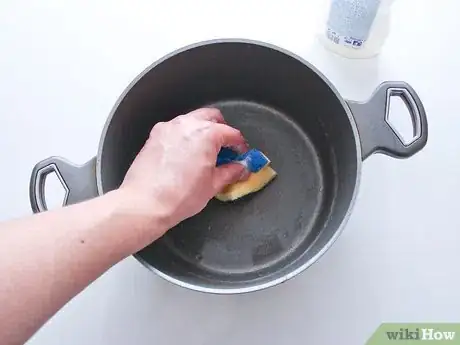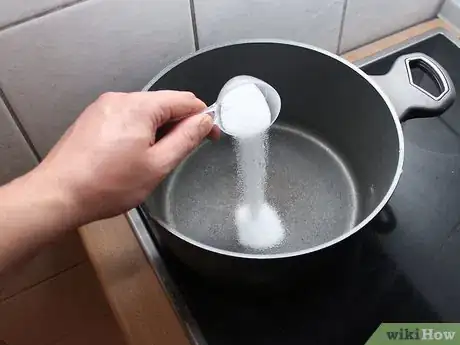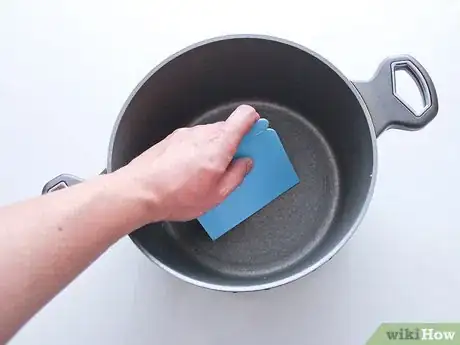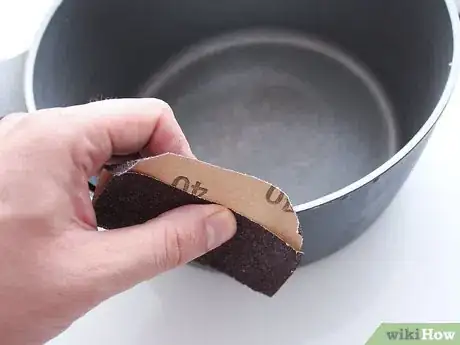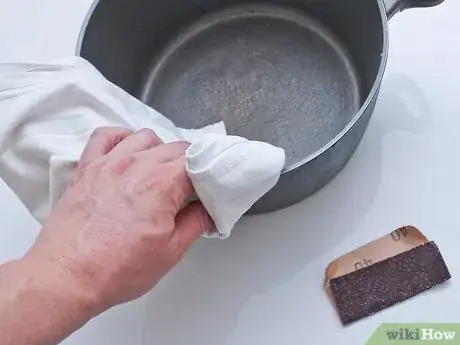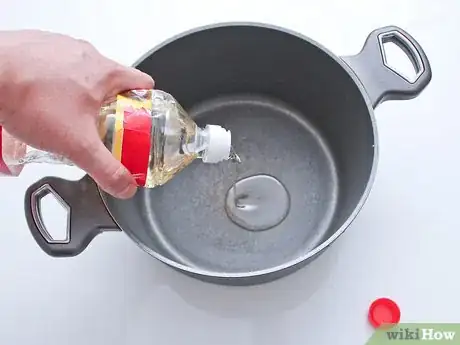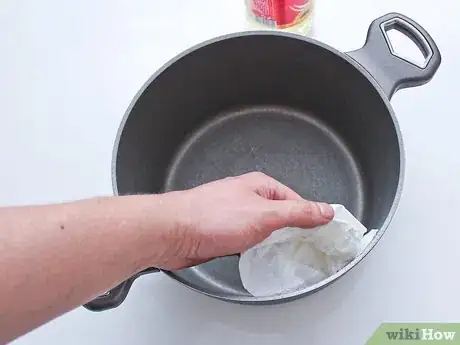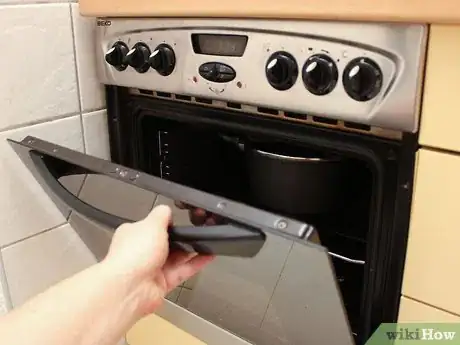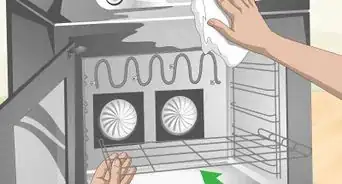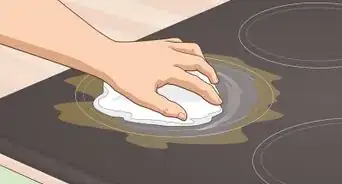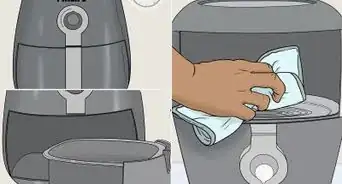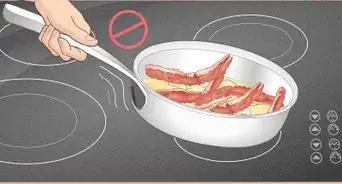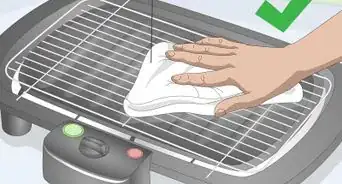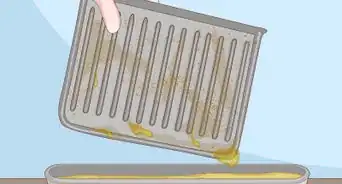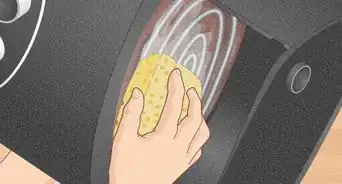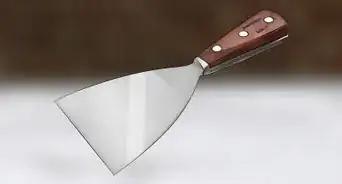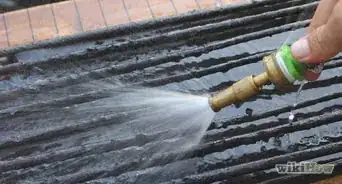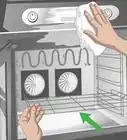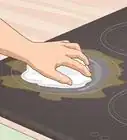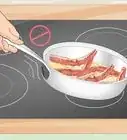This article was co-authored by James Sears. James Sears leads the customer happiness team at Neatly, a group of cleaning gurus based in Los Angeles and Orange County, California. James is an expert in all things clean and provides transformative experiences by reducing clutter and renewing your home environment. James is a current Trustee Scholar at the University of Southern California.
This article has been viewed 42,556 times.
Cleaning a cast iron Dutch oven is no different from cleaning any other cast iron cookware. Depending on how deep of a clean it needs, there are a number of different methods to choose from. Once it’s clean, taking a few extra steps in terms of maintenance and storage will help prolong its life for years to come. Even so, all cast iron needs to be re-seasoned every now and then, but this is pretty easy since your kitchen’s oven does most of the work for you.
Steps
Washing Dirty Cast Iron
-
1Wipe it down with cooking oil and towels. If the cast iron isn’t all that dirty and you use it a lot, simply pour in enough cooking oil to coat the insides. Then use cloth or paper towels to wipe away any loose bits of food. Use fresh paper towels to wipe away any excess oil. If it looks clean after that, that’s all you need to do, so call it a day![1]
- Cast iron becomes sterilized once it reaches 212 degrees Fahrenheit (100 degrees Celsius), which should only take a couple minutes the next time you use it.
- However, if you don’t use your Dutch oven frequently, it’s a good idea to give it a more thorough wash than this. The cooking oil may turn rancid after a few days of non-use.[2]
-
2Scrub with mild soap and warm water. Wet a sponge with warm water. Add a few drops of mild dish soap. Scrub off all traces of food and then rinse thoroughly with plain warm water.[3]
- A popular myth is that you should never, ever use soap on cast iron. Manufacturers definitely advise against using strong detergents, scouring pads, and dishwashers, but handwashing with mild soap is fine.
Advertisement -
3Use salt for tougher crud. To remove more stubborn bits of food that have scorched to your Dutch oven, shake some salt into it. Then place it on a burner and turn the heat to high. Use cloth or paper towels to scrub the abrasive salt around to loosen and dislodge the scorched bits. Then repeat either Step 1 or 2 to remove the salt and loosened crud.[4]
- The heat from the burner should also help loosen the crud as you work. However, cast iron heats up pretty quickly, so switch the burner off after a minute or two (or less if it feels too hot to handle safely).
- Wiping more cooking oil over the cruddy bits can also help loosen them as it heats up.
-
4Use special tools if needed. For especially tough crud, pick up some tools specifically designed for cleaning cast iron. Scrub your Dutch oven with steel mesh instead of a sponge or towels.[5] If you think that might be a little too abrasive, pick up some plastic scrapers so you can chip away at burnt food.
-
5Scour off any rust. Expect prolonged exposure to water to rust your Dutch oven pretty quickly. If your cast iron develops any, use steel mesh or fine-grade sandpaper to scrub it off.[6] If the rusted area was relatively minor, rinse it with warm water, dry it off, and then wipe it with cooking oil.
- If the rust returns soon afterwards, or if the affected area was pretty large, you will need to reseason your Dutch oven.
Caring for Your Dutch Oven after Washing
-
1Dry it immediately. Expect wet cast iron to start to rust pretty quickly. If you used any water to wash it out, wipe it dry immediately. To really ensure that all moisture has been removed, heat it in the oven or on the stovetop until all traces of water have evaporated.[7]
- This is only necessary for water, not cooking oil. Cooking oil will actually act as a barrier to water.
-
2Oil it back up and reheat it. Give your Dutch oven a quick reseasoning. Wipe it down with a light application of more cooking oil. Then wipe up any excess with fresh paper towels. Set the Dutch oven on a burner, set the heat to high, and let it heat up until it starts to smoke a little bit.[8]
- It should only take a couple minutes to start smoking at high heat.
-
3Prevent moisture from building up during storage. Always store your Dutch oven and its lid separately. Allow air to circulate inside it when it’s not in use. For double protection, stuff a few sheets of paper towels inside so they absorb any moisture that might accumulate during humid weather.[9]
Reseasoning Cast Iron More Thoroughly
-
1Reseason as needed. Expect to need to do a more thorough job of reseasoning now and then even if you give your Dutch oven a quick one after each use. How often this needs to be done will vary from person to person (for instance, if you use it to cook a lot of acidic foods, you will probably have to do so more often than someone who doesn’t). Thoroughly reseason your cast iron whenever:
- Foods begin to stick to it constantly.
- Rust recurs frequently and/or pervasively.
- The cast iron turns from shiny and black to dull and gray.
-
2Wash with mild soap and a brush. Definitely use a mild dish soap to wash it this time for a more extensive clean. Instead of a sponge, however, use a cleaning brush with stiff bristles for an even more rigorous job. Give it a thorough rinse with hot water and then dry it off.
-
3Oil it up again. Wipe it down with more cooking oil. This time, however, do it all over: both inside and out. Do a thorough job, but keep the application thin. Wipe away any excess with fresh paper towels if needed.
-
4Put your cast iron in the oven. First, expect oil to possibly drip from your Dutch oven while it bakes, even if you did a good job of removing the excess. Cover the lower rack with aluminum foil to keep the bottom of your oven clean. Then set your Dutch oven upside-down on top of that.
-
5Bake your cast iron. Turn the oven on. Heat it up somewhere between 350 and 400 degrees Fahrenheit (177 and 204 degrees Celsius). Once your oven reaches your desired temperature, let the Dutch oven cook inside it for a minimum of one hour. After that, it’s good to go.
Warnings
- Cast iron retains heat for quite a while after cooking, so always let it cool off until it’s safe to handle before washing.⧼thumbs_response⧽
- Always use warm water to wash, since cold water can damage the cast iron if it’s still warm.⧼thumbs_response⧽
References
- ↑ http://thepioneerwoman.com/food-and-friends/3-ways-to-clean-a-cast-iron-skillet/
- ↑ https://whatscookingamerica.net/Information/CastIronPans.htm
- ↑ James Sears. House Cleaning Professional. Expert Interview. 28 August 2019.
- ↑ http://www.seriouseats.com/2016/09/how-to-clean-maintain-cast-iron-pan-skillet-cookware.html
- ↑ http://thepioneerwoman.com/food-and-friends/3-ways-to-clean-a-cast-iron-skillet/
- ↑ http://www.motherearthnews.com/homesteading-and-livestock/remove-rust-from-cast-iron-pot
- ↑ http://www.seriouseats.com/2016/09/how-to-clean-maintain-cast-iron-pan-skillet-cookware.html
- ↑ http://www.seriouseats.com/2016/09/how-to-clean-maintain-cast-iron-pan-skillet-cookware.html
- ↑ https://whatscookingamerica.net/Information/CastIronPans.htm
About This Article
If you use your cast iron dutch oven regularly and it's not too dirty, all you need to do to clean it is add enough oil to coat the inside. Then, use a towel to spread the oil, picking up any bits of food as you go. Use one more towel to soak up any excess oil, and you're done! For more stubborn bits of food, shake some salt into the cast iron, place it on a burner, and turn the heat on high. Then, use a cloth to scrub the abrasive salt around to loosen the grime. For tips on how to care for your dutch oven after washing, keep reading!

